Haven’t preordered my book yet? Do it here!
I’m a big fan of a lot of things that the Cook Political Report with Amy Walter does. (It was my first job out of college!) If you care about campaign politics, it’s simply a must-subscribe.
But, my favorite thing that they do is the Partisan Voting Index (PVI) — a way to compare every House seat in the country against every other House seat based on presidential voting performance.
For example, a seat with a PVI score of D+8 means that the district is eight points more Democratic than the nation as a whole — as judged by the 2016 and 2020 presidential election results. An R+2 seat means the seat is 2 points more favorable to the GOP than the national average in those two elections. And so on.

It’s an incredibly useful tool to get a sense for which seats — and how many — are genuinely competitive and, consequently, where the two parties will be fighting for the majority in the years to come.
CPR released its latest PVI score on Wednesday morning and there’s a ton of interesting data in there. But, what jumped out to me was the massive decline in competitive seats.
Consider this: Just 82 of the House’s 435 districts have a PVI score between D+5 and R+5 — the standard by which CPR rates competitiveness. That’s just 19% of all seats!
It’s an even smaller percentage when you look at the most competitive districts, with PVI scores between D+3 and R+3. That accounts for only 45 seats — or a meager 10% of the House.
That lack of competitiveness is, in and of itself, interesting. But when you look at the trend line on competitive seats, it’s even more startling.
Back in 1999, there were 164(!) House seats with PVI scores between D+5 and R+5. Which means the number of competitive seats has been cut in half in less than 25 years.
The story is similar among that most competitive subsection of seats. In 1999, there were 107 House districts with PVIs of between D+3 and R+3. 107! That’s a nearly 60% decline in the swingiest of districts between 1999 and 2023.
The rapid erosion in competitive seats is due primarily, according to the Cook Report’s David Wasserman, to the fact that we are reorganizing ourselves into more and more homogenous communities.
As Wasserman notes:
For example, the boundaries of rural eastern Kentucky's 5th CD haven't changed much since 1997, but its PVI score has shifted from R+2 to R+32 as its voters have abandoned national Democrats. Likewise, the PVI score of Wisconsin's 2nd CD has ballooned from D+8 to D+19 as Madison has continued to attract like-minded liberal voters.
Increasingly we want to live around, shop with and go to school with people who see the world exactly as we do. And we are willing to move — whether intra-state or even between states — to get that sort of situation for us and our families.
That’s, of course, not the only factor contributing to the decline of competitive House seats. We have now had three straight national redistricting processes — over the past 30 years — that have shored up incumbents of both parties, and, in so doing, eliminated lots and lots of swing seats.
Regardless of the reasons, the impact is clear: A decline in districts that are competitive in general election settings means fewer and fewer members of Congress who are incentivized to find ways to get things done across the aisle.
In fact, most members of Congress are disincentivized to do anything with the other party as it could create a primary challenge — the only place where they are now in any electoral danger.
You can see this play out in the voting records of the House — as categorized by the invaluable DW-Nominate scores.
Here’s a look at the voting patterns of the current Congress:
You’ll immediately notice the blue dots (representing Democratic members of Congress) are all grouped on the liberal end of the spectrum while the red dots (Republican House members) are on the conservative side.
Compare that to the same chart from 20 years ago:
And the exact same chart from 40 years ago:
You can literally see the ideological middle disappear over the course of those three charts. That large white space in the top chart? It’s the missing middle.
This stat, from Cook’s Wasserman, makes that same point in electoral terms:
Back in the 105th Congress (1997-1998), there were 26 Democrats sitting in districts with PVIs of R+3 or more and 14 Republicans in seats with PVIs of D+3 or more. Today, there are just five Democrats and four Republicans in seats surpassing those thresholds.
The consequences of the death of the swing district — and the ideological middle — are considerable. Serving in Congress is now about peacocking for your party base because, for the vast majority of House members, those are the only constituents they need to worry about.
There is almost no interest in bipartisan solutions or even working with members of the opposite party.
And far from punishing that behavior, voters are increasingly rewarding it. We live in a what looks more and more like a parliamentary system where voters are choosing candidates based on the name on the front of the jersey, not the one on the back.
Something is lost when our American democracy functions (and doesn’t function) like this. Something very important.




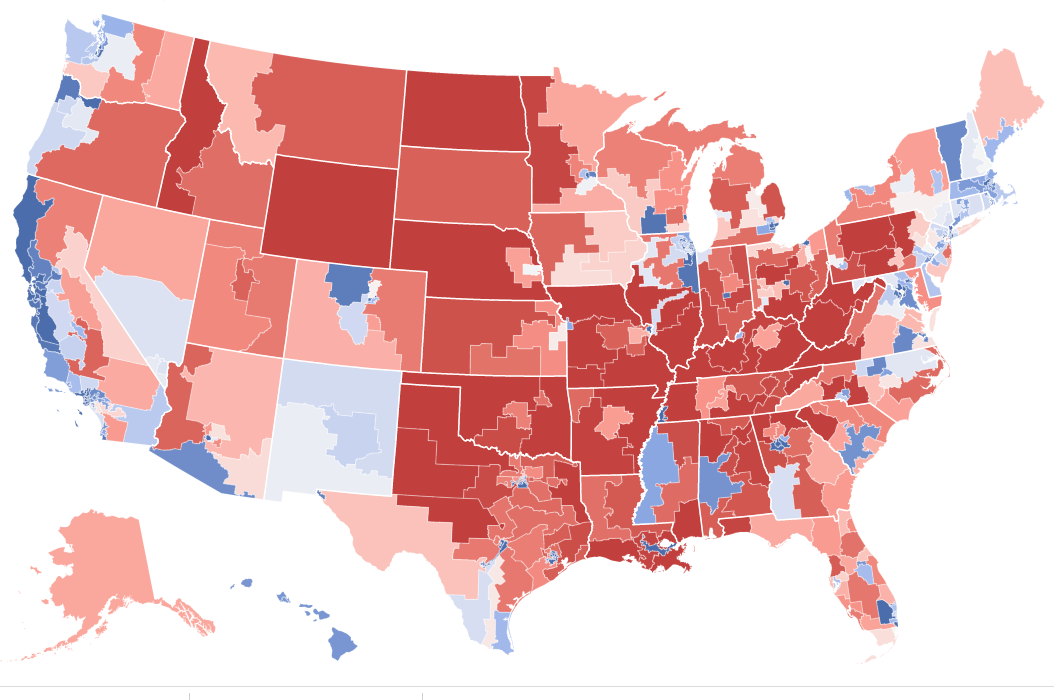
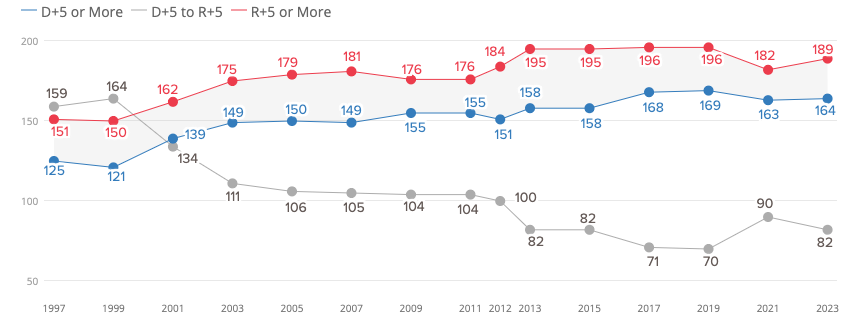
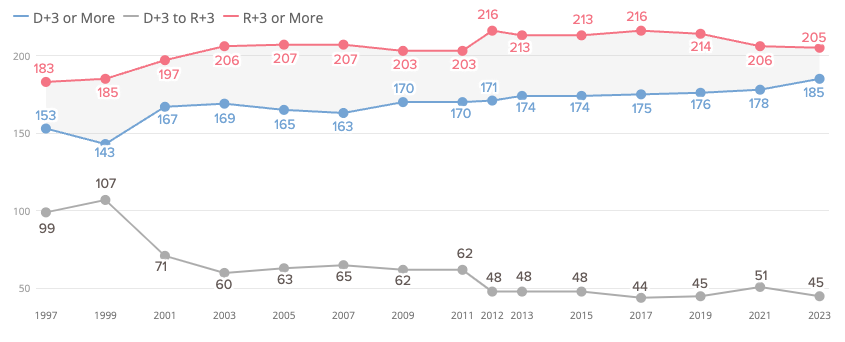
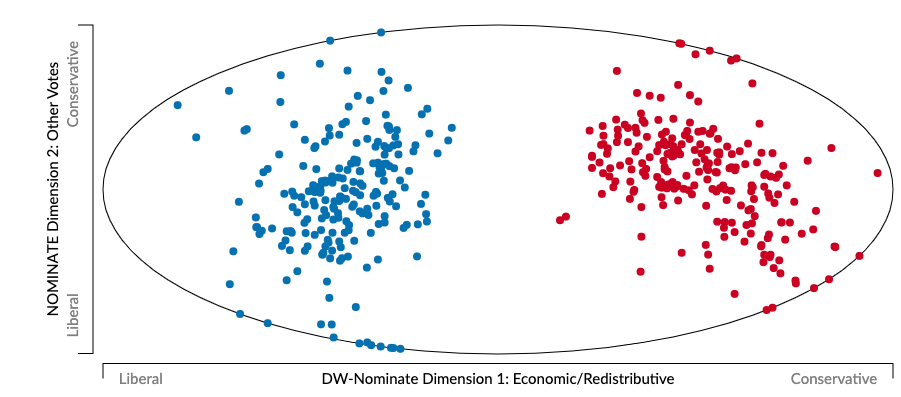
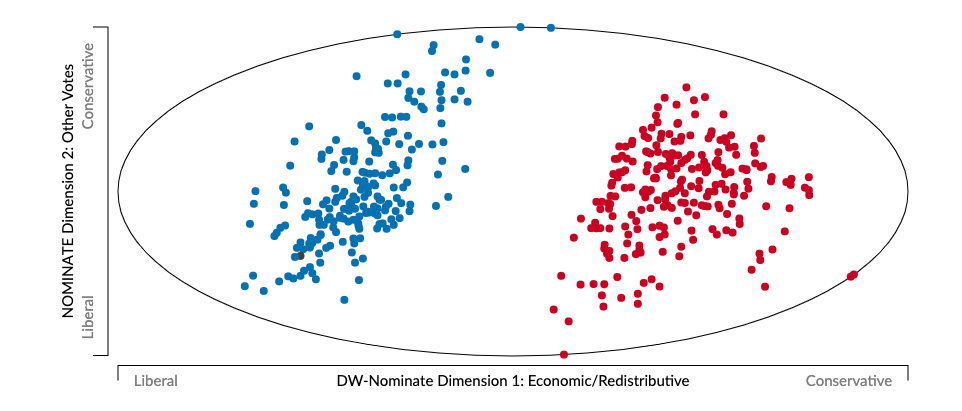
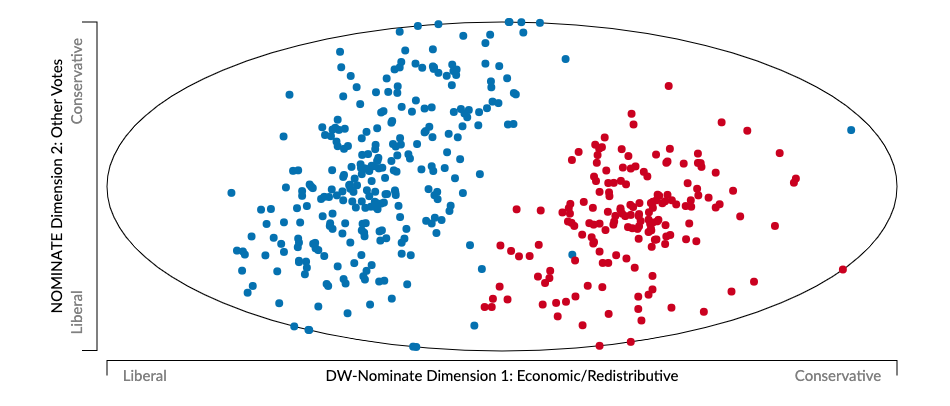
There is a verse in Isaiah “Can a land go through a birth in a single day, can a nation be born in a single breath,” [Isaiah 66.8] and I think the opposite is true that a land and nation can sunset by a million cuts, and seems as if the days we see all this unfolding in front of our eyes hastens faster every 24 hours. Your analysis is correct - my opinion. We’re all retreating to our respective tribes. We are all convinced of the rectitude of what we think and what we want to believe is/are written on the Tablet. I am 73.5, I want to live long enough to see how all this unfolds. I am a most disappointed and disheartened Democrat, and I know for a fact that most of my close peers were once Democrats. Check into what just occurred in Mecklenburg County in NC, a former Democrat switching parties in the NC House making it a veto proof Republican majority. I am not alone. Sad, very sad.
Totally tragic and unsustainable :(